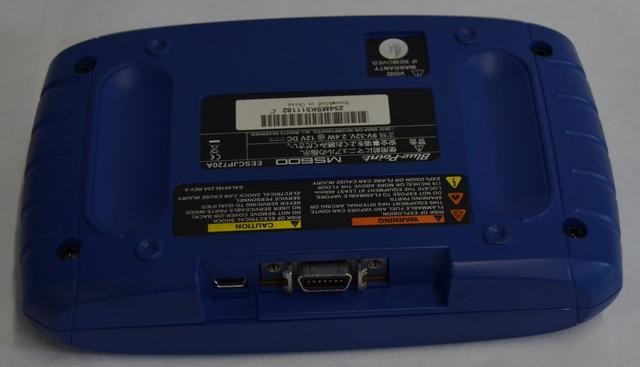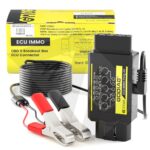As a dedicated content creator for carparteu.com and an auto repair specialist, I’m diving into the crucial topic of onboard diagnostic systems, specifically focusing on Ford Obd1 Vs Obd2. For enthusiasts and mechanics working on Ford vehicles, understanding the evolution from OBD1 to OBD2 is essential for effective diagnostics and repair. This article will clarify the key differences and help you navigate the diagnostic landscape of both systems.
Before the standardized OBD2 system became mandatory in 1996, vehicles, including Fords, utilized various proprietary diagnostic systems, collectively known as OBD1. Ford’s early systems, like EEC-IV (Electronic Engine Control IV), were precursors to OBD1 and varied significantly in terms of diagnostic capabilities and connector types. These systems, while providing some diagnostic information, lacked the uniformity and comprehensive data offered by OBD2.
Key Differences Between Ford OBD1 and OBD2:
- Standardization: The most significant difference lies in standardization. OBD2 is a globally standardized system, meaning all OBD2-compliant vehicles (including Fords post-1996) use the same diagnostic connector (SAE J1962), diagnostic trouble codes (DTCs), and communication protocols. Ford OBD1 systems, however, were manufacturer-specific. This meant different Ford models, and even different years within the same model, could have varying connectors, codes, and diagnostic procedures.
- Diagnostic Capabilities: OBD2 significantly expanded diagnostic capabilities. It monitors a broader range of vehicle systems, including emissions-related components, powertrain, and sometimes chassis and body systems. OBD1 systems in Fords were generally more limited, primarily focusing on engine control and basic emissions. OBD2 provides more detailed data, including live sensor readings and freeze frame data when a fault occurs, offering a clearer picture of the issue.
- Connector and Access: OBD2 utilizes a standardized 16-pin Diagnostic Link Connector (DLC) usually located under the dashboard on the driver’s side. Ford OBD1 systems used various connectors, often located in the engine bay or passenger compartment, and the connector types could differ widely. Accessing OBD1 data often required specialized tools and adapters specific to Ford and the particular model year.
[paragraph break]
To illustrate the practical implications of these differences, consider the experience of diagnosing older Ford vehicles. Recently, I acquired a set of MT2500 modules, specifically the MT25001099, which is essential for working with OBD1 GM, Chrysler, Ford, and Jeep vehicles. These modules highlight the need for specific tools for OBD1 systems, as they are not universally compatible like OBD2 scanners.
[paragraph break]
Furthermore, I invested in a Bluepoint Microscan III EESC720, a scanner known for its ability to handle both OBD1 and OBD2 systems. The Microscan III, when paired with the correct cable – in this case, the Snap-On EAX0069L15A OBD1 cable – and appropriate OBD1 adapters, becomes a valuable tool for diagnosing classic Ford vehicles. Snap-On, a reputable brand in automotive diagnostics, offers various OBD1 adapter kits, emphasizing the adapter-dependent nature of OBD1 scanning.
 Connector for Microscan III
Connector for Microscan III
A close-up view of the connector port on a Bluepoint Microscan III scanner, highlighting the interface for different diagnostic cables and modules used for both OBD1 and OBD2 vehicle systems.
[paragraph break]
My plan is to compare the OBD1 capabilities of both the MT-2500 and the Microscan III on my Ford OBD1 vehicles. This hands-on comparison will provide valuable insights into the effectiveness of different diagnostic approaches for older Ford systems. Understanding the nuances of Ford OBD1 is crucial for anyone working on pre-1996 Ford models. While OBD2 offers a streamlined and standardized approach, diagnosing older Fords requires specialized tools and knowledge of their unique OBD1 implementations.
Conclusion:
The transition from Ford OBD1 to OBD2 represented a significant leap in automotive diagnostics. OBD2’s standardization, enhanced capabilities, and easier access have simplified vehicle diagnostics for modern cars. However, for owners and mechanics dealing with classic Ford vehicles, understanding and utilizing OBD1 diagnostic methods and tools like the MT2500 and Microscan III remains essential for proper maintenance and repair. Knowing the “ford obd1 vs obd2” differences is key to effectively troubleshooting any Ford, regardless of its age.

